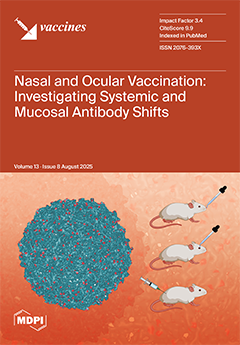Background/Objectives: The middle-income countries (MICs) in the Middle East and North Africa (MENA) region face multifaceted challenges—including fiscal constraints, conflict, and vaccine hesitancy—that impede the timely introduction of critical vaccines. This study examines the status, barriers, and facilitators to introducing three critical
[...] Read more.
Background/Objectives: The middle-income countries (MICs) in the Middle East and North Africa (MENA) region face multifaceted challenges—including fiscal constraints, conflict, and vaccine hesitancy—that impede the timely introduction of critical vaccines. This study examines the status, barriers, and facilitators to introducing three critical vaccines—human papillomavirus vaccine (HPV), pneumococcal conjugate vaccine (PCV), and rotavirus vaccine (RV)—across seven MENA MICs, to identify actionable solutions to enhance vaccine uptake and immunisation coverage.
Methods: Using the READ methodology (ready materials, extract, analyse, and distil data), this review systematically analysed policy documents, reports, and the literature on the introduction of HPV, PCV, and RV vaccines in seven MENA MICs. A data extraction framework was designed to capture the status of vaccine introduction and barriers and facilitators to introduction. Findings and data gaps were validated with stakeholder consultations.
Results: Of the seven study countries, progress in introducing PCV and RV has been uneven across the region (five countries have introduced PCV, four have introduced RV, and only a single country has introduced HPV at time of writing), hindered by vaccine hesitancy, fiscal challenges, and insufficient epidemiological data. Morocco is the only country to introduce all three vaccines, while Egypt has yet to introduce any. Other common barriers include the impact of conflict and displacement on healthcare infrastructure, delayed introduction due to the 2020 COVID-19 pandemic, and limited local production facilities and regional cooperation. In addition, not all countries eligible for Gavi MICs support have applied. These findings provide a roadmap for policymakers to accelerate equitable vaccine introduction in the MENA region.
Conclusions: Targeted efforts, such as addressing fiscal constraints, improving local manufacturing, tackling gender barriers, and fostering public trust, paired with regional collaboration, can help bridge gaps and ensure no community is left behind in preventing vaccine-preventable diseases.
Full article






